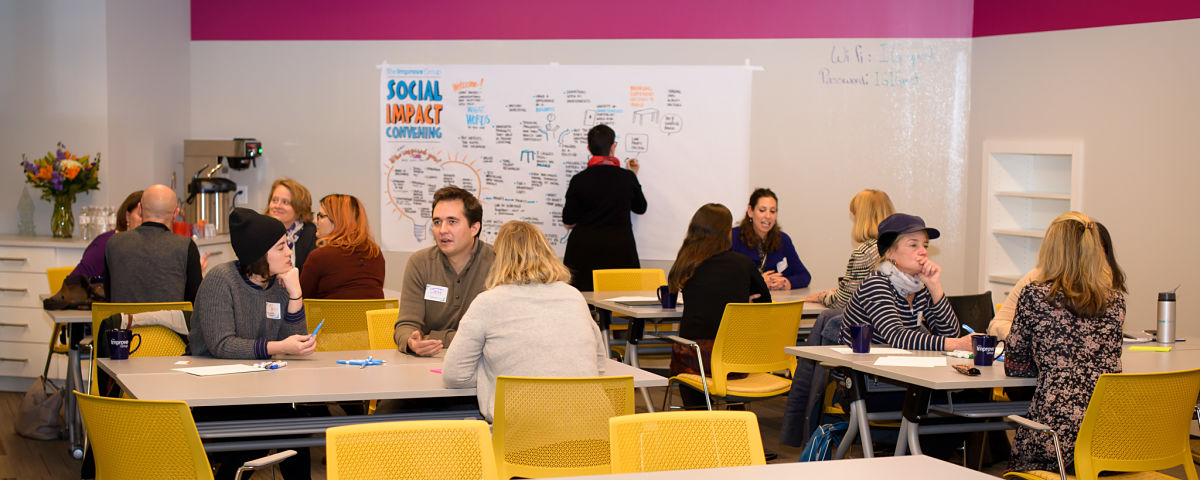
Over the last few years, the way our team thinks about social impact has been changing. We’ve been intrigued by ideas about experimentation, learning from failure, person-centered design, and market strategies for social impact. Luckily for us, many brilliant thinkers are also examining these issues:
- In a 2014 Nonprofit Quarterly article, Rick Cohen expertly lays out the claims made in favor of social impact bonds – a vehicle using financial incentives to generate better outcomes – and then identifies many reasons for skepticism
- Our advisory board member Gary Cunningham recently introduced us to the concept of targeted universalism, which suggests that, by designing interventions with the most vulnerable in mind, you can gain support and make significant changes that ultimately benefit everyone. A recent article in the Stanford Social Innovation Review describes one of the most widely lauded examples: curb cuts help people with scooters, strollers, shopping carts, and suitcases, just like they help people in wheel chairs.
- On the subject of design and control of social impact initiatives, Michael Hobbes, in this New Republic article, and the organization Give Directly note that external solutions are nearly always problematic, and local people are best positioned to address their needs. Others offer an opposing point of view: the Stanford Social Innovation Review notes that systemic change and larger-scale investments are needed to create the environments in which people and markets can thrive.

On Dec. 1, we launched an effort to explore these issues further—and to examine the role that we, as evaluators, researchers, and planners, should be playing. More specifically, we seek to understand how we can bring about some of the lasting social changes we’d like to see right in our own community – from supporting a more inclusive civil society to increasing opportunities for creativity. We invited colleagues from across sectors – business, philanthropy, nonprofit and government – to come together to talk about social impact.
In that initial conversation, participants shared some truly powerful insights:
- New thinking in the for-profit sector has expanded to include “low-profit” – companies that are willing to forego profit for positive social impact
- A full range of approaches, akin to a portfolio with varying levels of risk and potential payoff, is necessary. Tried-and-true initiatives that have tested outcomes are still needed to help people with issues like housing, employment, and education, while innovations are needed to find ways to make a broader impact.
- By bringing together the public, nonprofit, philanthropic, and corporate sectors, we can adapt strategies from each. For example, the nonprofit sector has a long history of identifying measures for complex social change that the other sectors could learn from. The for-profit sector has strategies to fail fast, learn from failure, and continue moving forward.
- In order to learn from our partners and complement each other’s work, it is important to build respect and opportunities for learning across sectors.
- Underlying positive social impact is a need for measurement – without measurement, you can’t determine what worked, what didn’t, and continue to learn and adapt.
We are looking forward to continuing this important conversation in 2017-and we welcome your contributions and insights!
Contact us at info@theimprovegroup.com if you want to be part of the conversation as it evolves.
